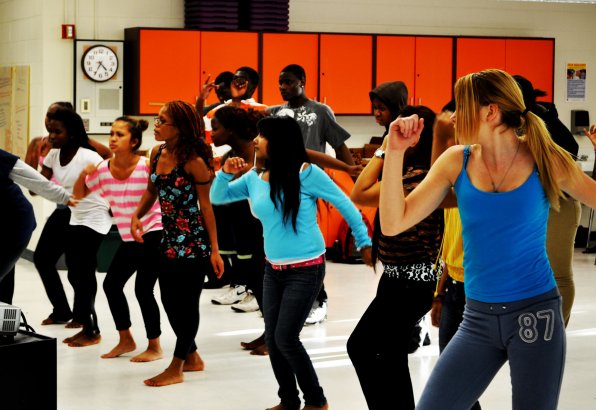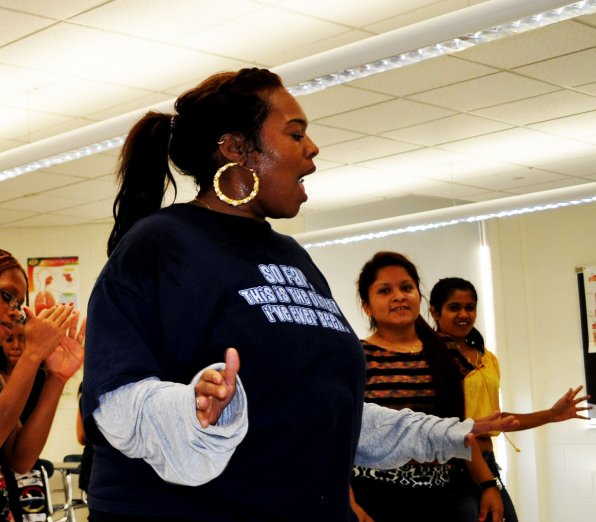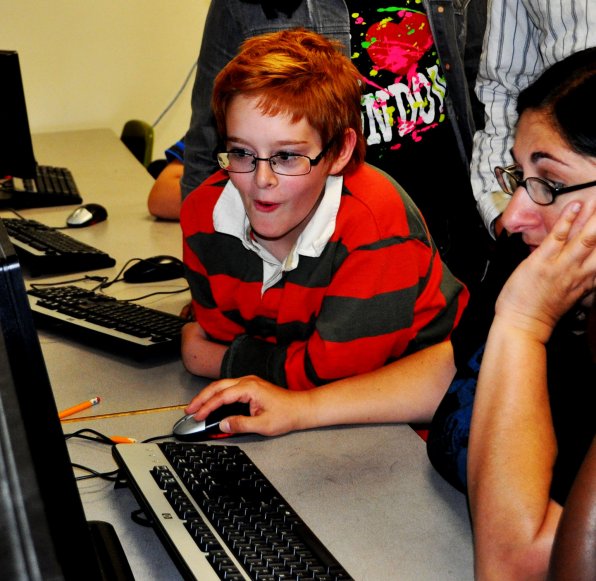Sebastian Hart-Meyer’s notebook contains more than the daydreaming doodles of a typical eighth-grade student.
Instead, his pages are filled with detailed drawings and descriptions, most of which apply to items he hopes you’ll be using in your household in the future.
Why not now? Because they don’t exist yet.
With the help of a 21st Century Community Learning Center grant – known as 21C – and Rundlett Middle School, though, Meyer and several classmates are hoping that could change.
Rundlett and Concord High School were both the recipients of 21C grants this summer, which have allowed the schools to implement comprehensive and perse after-school programs that tap into a wide variety of student interests, with categories that run the gamut from tutoring to cultural activities to creative outlets and exercise.
A major focus, according to Sue Farrelly, the program director of the 21C projects at both schools, is promoting “social, emotional and physical wellness.”
Hart-Meyer is part of Rundlett’s inventors club, a group looking to secure patents for creative inventions. He said he is also “big into stocks” and referred to a classmate as a “former business partner” – Hart-Meyer is all of 13 and appears to have a better portfolio than most 30-year-olds – but the inventors club gives him an outlet to share all the creativity hidden behind the cover of his notebook.
Students have taken their ideas and submitted them to Quirky.com, a website that provides feedback to narrow a design’s focus and, if selected, aids in the creation of the item.
“It’s cool because if you can’t afford a patent lawyer or someone to make an invention for you, you can send it to Quirky and they’ll help you design it and give you feedback,” Hart-Meyer said.
The inventors club is merely the tip of the iceberg in terms of offerings at the two schools. Rundlett students can take part in activities that include open gym, cup stacking, glee club, knitting, dance club, newspaper, scrapbooking, ELL Sharing of Cultures and Granite United Way’s Youth Venture, the latter of which gets students together to develop the tools for positive social change. A group at Rundlett last Tuesday was ironing out an anti-bullying plan.
The high school is equally perse, as students can take part in activities that include open gym, Frisbee club, dance club, robotics club or Magic club. There are also offerings like knitting, bike shop, an environmental group and a program with ConcordTV.
Both schools also offer homework clubs where students can get any additional assistance they need, as well as a handful of other options.
“It ties in with the school day, but it’s different from the school day. Kids can take a lot of what they learn during the day and apply it,” Farrelly said. “Kids become more engaged in the school and the school community if they feel comfortable and happy and safe. They may feel they have more resources and more people to go to should they need help. Doing well means different things to different students.”
The grants are designed to provide that atmosphere, with at least 15 hours of programming at each school required each week. There are plenty of teachers at both schools involved, but many of the programs are taught by professional instructors. The afternoon begins with a sign-in and snack time, where students receive a snack from two food groups before dispersing to their activities,
Another critical component is that both schools also provide busing at the end of the day, allowing students who couldn’t have otherwise coordinated a ride to take part in the program.
The grants are for five years each, with the first three years fully funded. The fourth year is funded at 75 percent and the fifth at 60 percent, with schools encouraged to find ways to cover the rest. Both grants can be re-applied for after the five-year window.
The schools are only months into the initial year, but participation continues to grow. Farrelly estimated that about 185 middle school students and more than 200 high school students were taking advantage of the program.
“It’s rewarding to work with kids and watch them get work done and be happy and pleased with themselves, but also to see the friendships formed between students that may not have sat next to each other in the cafeteria during lunch,” Farrelly said. “We have students dancing together that don’t necessarily do things together after school, or while waiting for the bus they’re chatting with someone new. And teachers are getting to know different students.”
Some options became immediate hits, like the dance club at the high school run by professional instructor Shamecca Brown. It’s a combination of Zumba and up-tempo dance that has exposed students to music from a variety of cultures and has both brought students out of their shells and given them a new social circle to interact with.
“It shows who I am,” 10th-grader Jhmera Wilson said. “We get a lot of exercise, and we can show our personality through dance.”
Ninth-grader Brii Sears said, “it’s a good way to express ourselves. Dance is like a great big family. If you have people that don’t like you at school, you’ve always got your family to come dance with.”
There are benefits that can be seen in the classroom, as well. The homework clubs provide the opportunity for students to get extra assistance, or simply to have access to equipment they otherwise wouldn’t find at home.
“At home, I don’t have a computer, so I have a chance to use one here,” senior Kalpana Darjee said. “And at home I would probably not get as much done, so it’s really helpful.”
Added 10th-grader Basanta Rai, “You can get a lot of help from teachers, and I can get a lot of work done here that I probably wouldn’t get done at home. I feel like my focus is on homework instead of other stuff.”
Early returns are positive, but Farrelly said she would like to see the program continue to grow, with the hope of getting any student who may benefit from the opportunity to take full advantage.
“The challenge is getting the word out, and I’ve been told you have to get it out three times before someone will hear it. It’s getting students to remember, “Oh yeah, it’s Tuesday. I can go over to ConcordTV and learn how to use a camera,” Farrelly said. “We’d like it to grow steadily over time. The vision for this year is just to become part of the school communities so everyone knows what 21C is and the possibilities of what we might provide, and then we’ll grow from there.”











